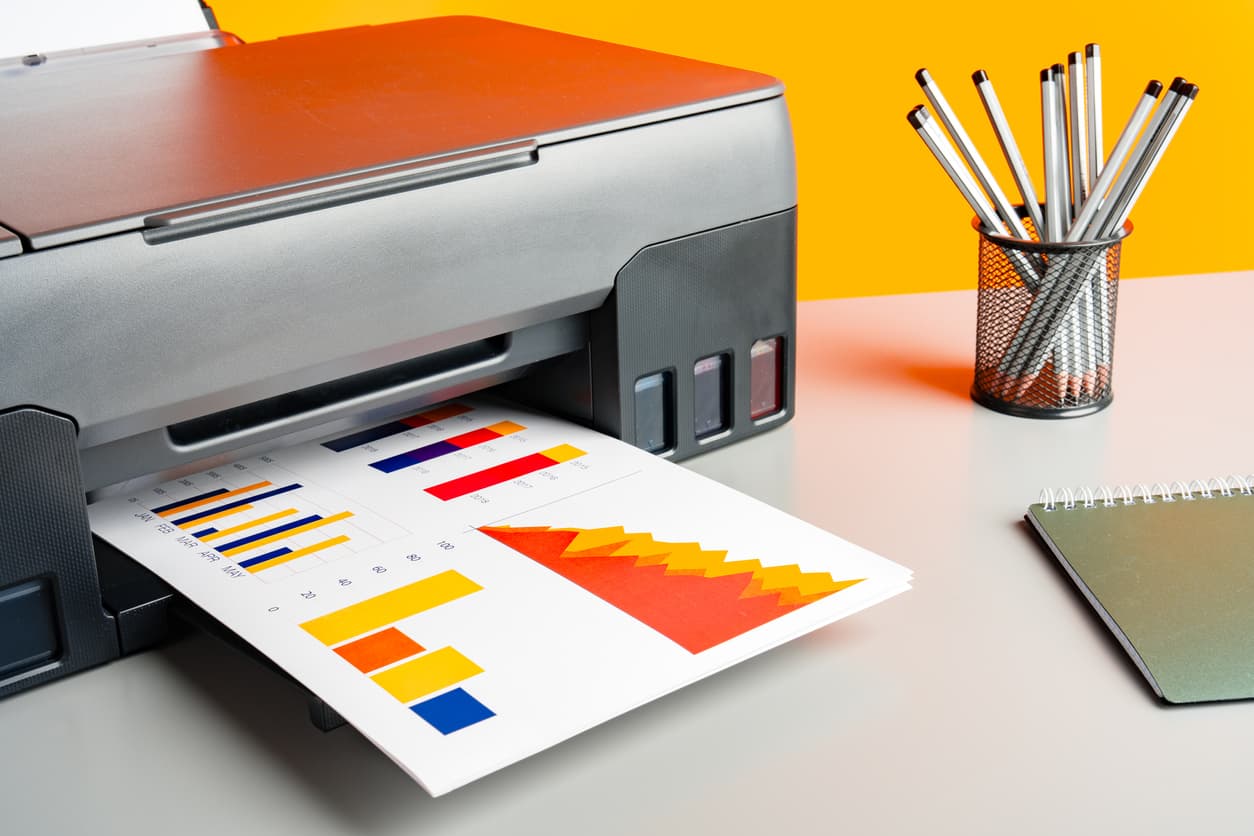In the age of digitalization and rapid technological improvements, printers have long been a staple in domestic and office settings. However, as we step into 2024, the position of printers is undergoing significant transformations, driven by using emerging technology, environmental worries, and converting client behaviours. This article delves into the evolving characteristics of printers in 2024, exploring the modern-day developments, improvements, and implications for businesses and people alike.
1.The Rise of 3-D Printing: Redefining Manufacturing and Creativity
One of the most tremendous developments within the printing landscape is the proliferation of the 3-D printing era. In 2024, 3-D printers have transcended their novelty reputation to become necessary equipment in various industries, including manufacturing, healthcare, structure, and style. The potential to create three-dimensional objects layer by layer has revolutionized prototyping, customization, and production methods.
3-D printing permits fast prototyping and new releases in manufacturing, accelerating product improvement cycles and reducing time-to-market. Companies can now hastily rework virtual designs into physical prototypes, facilitating layout validation and price-powerful experimentation. Moreover, the customization ability of 3-D printing has opened new avenues for customized products, catering to man or woman options and niche markets.
Beyond conventional industries, 3-D printing has also permeated creative realms, empowering artists, designers, and hobbyists to materialize their creativity with unprecedented precision and ease. From tricky sculptures to purposeful gadgets, the versatility of 3D printing fuels innovation and creativity across diverse disciplines. As accessibility and affordability continue, 3-D printers are poised to democratize production and unleash a new wave of entrepreneurial endeavours.
2.Sustainable Printing Practices: Navigating Environmental Imperatives
In parallel with technological improvements, the printing industry is in the process of a paradigm shift toward sustainability. With developing awareness of environmental problems and regulatory pressures, corporations and clients are annoying greener printing answers. In reaction, printer producers prioritize green layout standards, substances, and operational practices.
In 2024, eco-conscious purchasers will have access to several sustainable printing options, such as energy-green printers, recycled paper, and green ink cartridges. Printer producers are incorporating recycled plastics, lowering carbon emissions during production, and implementing power-saving functions to minimize environmental impact. Additionally, improvements in inkjet and toner technology are improving print quality, even reducing helpful resource consumption, and aligning printing practices with sustainability goals.Moreover, adopting digital workflows and paperless initiatives lowers reliance on revealed documents, mitigating paper waste and deforestation. Businesses are embracing digital report control systems, cloud-based totally collaboration platforms, and virtual signatures to streamline workflows and limit paper utilization. While printing stays crucial for sure applications, the shift closer to digitalization is riding performance gains and environmental stewardship across industries.
3.Print Security inside the Digital Age: Safeguarding Sensitive Information
Amidst the digitalization of workflows and the proliferation of interconnected devices, print safety has become an essential difficulty for organizations and people. In a generation marked via cyber threats and records breaches, printers have become ability access points for malicious actors seeking to compromise touchy statistics. In 2024, print protection incorporates a multifaceted approach to safeguarding devices, statistics, and networks against evolving threats.
Printer producers integrate robust security features into their merchandise, encryption, authentication mechanisms, and intrusion detection systems. These measures assist in saving you from unauthorized access, mitigate record breaches, and ensure the confidentiality and integrity of published files. Furthermore, firmware updates and everyday security patches cope with vulnerabilities and bolster the resilience of printers towards rising cyber threats.
In addition to hardware-level protection enhancements, groups are implementing complete print safety regulations and methods to control printer usage, get admission to controls, and report handling. Employee-focused schooling packages educate personnel about print protection best practices, phishing scams, and social engineering methods, empowering them to recognize and mitigate potential dangers. By fostering a lifestyle of safety cognizance, groups can boost their protection posture and reduce the chance of print-associated protection incidents.
Conclusion:
As we journey further into the virtual age, the function of printers in 2024 is characterized by innovation, sustainability, and security. From the advent of three-D printing to the inclusion of sustainable printing practices and the prioritization of print protection, printers are evolving to meet the needs of a converting landscape. Businesses and people should adapt to those transformative traits, leveraging printing technology to drive efficiency, creativity, and environmental stewardship even as safeguarding sensitive data in an increasingly more interconnected global.In essence, the future of printing isn’t always simply about putting ink to paper; however, it is approximately harnessing generation to empower innovation, guard the planet, and secure virtual surroundings. By embracing those concepts and leveraging the trendy advancements in printing technology, we will navigate the print landscape of the following day with self-assurance and foresight, shaping a future wherein printing remains applicable, accountable, and resilient in the face of ongoing alternatives.
FAQs
- What is 3-D printing, and what does it differ from conventional printing?
Answer: 3D printing, additionally known as additive manufacturing, makes three-dimensional items through layering materials based on a virtual version. Unlike conventional printing, which produces dimensional pictures or text on paper, 3-D printing builds up layers of fabric to form a physical item with depth and quantity.
- How has 3-D printing impacted industries’ past production?
Answer: The impact of 3-D printing extends past production into various industries consisting, of healthcare, architecture, fashion, and layout. In healthcare, for example, 3D printing is used to create patient-particular implants, prosthetics, and anatomical fashions for surgical planning. In structure, it allows fast prototyping of architectural styles and the construction of complicated geometries. In fashion, designers use 3D printing to create custom clothing and add-ons with intricate designs.
- What steps are printer producers taking to deal with environmental worries?
Answer: Printer manufacturers are implementing eco-friendly layout ideas, using recycled substances in their merchandise, and reducing strength intake for the duration of manufacturing. They are also developing energy-efficient printers, promoting the use of recycled paper, and providing eco-friendly ink cartridges. Additionally, advancements in inkjet and toner technologies are lowering aid intake whilst maintaining print first-rate.
- How can people and companies contribute to sustainable printing practices?
Answer: Individuals and companies can contribute to sustainable printing practices by adopting strength-green printers, recycled paper, and ink cartridges. They also can decrease paper utilization by embracing virtual workflows, electronic file management systems, and cloud-primarily based collaboration systems. Reducing reliance on printed documents and adopting paperless initiatives could mitigate paper waste and deforestation.
- What are the main protection worries of printers in the virtual age?
Answer: Printers in the digital age are at risk of numerous protection threats, such as unauthorized get admission, statistics breaches, and malware assaults. Malicious actors may exploit vulnerabilities in printer firmware or network protocols to benefit from entry to sensitive data or compromise network protection. Additionally, unsecured print jobs left on output trays may be intercepted, leading to data leakage or unauthorized right of entry.
- How are printer manufacturers addressing print safety concerns?
Answer: Printer manufacturers integrate robust security functions into their merchandise, including encryption, authentication mechanisms, and intrusion detection structures. They additionally launch firmware updates and safety patches to cope with vulnerabilities and beautify the resilience of printers against emerging cyber threats. Moreover, producers offer steerage on imposing print safety policies and strategies to manipulate printer usage and document management.
- How can companies decorate print safety within their environments?
Answer: Organizations can beautify print protection by enforcing complete policies and methods to manipulate printer usage, get entry to controls, and record dealing with. They should perform regular safety audits and threat tests to identify vulnerabilities and mitigate ability risks. Employee recognition education programs should teach personnel approximately print safety satisfactory practices, phishing scams, and social engineering methods, empowering them to efficiently apprehend and mitigate security threats.


